Gibraltar's Secret Wars
Operation Ursa Major begins in earnest
Inspired by successful attacks on Allied shipping moored at Gibraltar launched from the Italian submarine Scire, Decima Flottiglia MAS decided to up the ante and establish a base for operations in Algeciras.
By Nick Nutter on 2024-03-26 | Last Updated 2025-05-19 | Gibraltar's Secret Wars
This article has been visited 2,735 times

Gibraltar Bay
Operation Ursa Major
In the spring of 1942, Italian frogmen from Decima Flottiglia MAS created a secret base from which to conduct underwater operations, attacking allied shipping in Gibraltar Bay and harbour. They had converted an interned merchant ship, the Olterra, moored at Algeciras, into a hidden depot for their manned torpedoes, nicknamed maiale. From the Olterra they could launch the maiale and frogmen underwater whilst remaining unseen from any observers.
Do you enjoy my articles? For your reading pleasure, this website does not carry third party ads. You could help me write more articles by buying me a cup of coffee.
Decima Flottiglia MAS Operation 13th July 1942
In early July, the Olterra was not quite ready to start operations. The Italian frogmen were relocated to a secondary base, the Villa Carmella at Puente Mayorga on the northern side of Gibraltar Bay.
On a July night in 1942, the Italian frogmen, donned their black Belloni diving suits. Each carried three "cimici" mines, inflatable donut-shaped contraptions, unlike the magnetic limpets they were used to, plus their breathing gear, masks, and fins. Their objective: wreak havoc on the British ships anchored at Gibraltar.
Under cover of darkness, the twelve men crept across the garden and down the dry arroyo Cachon to the coast. The frogmen slipped into the water and quietly swam toward Gibraltar harbour. The silence was broken only by the lapping water and the nervous gasps as they ducked underwater to avoid patrolling boats. Disaster almost struck twice, a propeller sliced one diver's foot, while another suffered a concussion from one of the small depth charges lobbed into the water from the boats.
Despite the setbacks, the remaining ten frogmen reached the harbour undetected. With practiced movements, they attached their cimici mines to the unsuspecting ships' hulls. The mines nicknamed 'bugs,' sat in the middle of an inflatable ring, rather like a child's swimming ring. The mine had to be positioned directly beneath the keel of a ship or against a flat bottom. The ring was inflated using a small, compressed air cylinder and the whole apparatus was only held in place because the ring was trying to rise through the water and was being prevented from doing so by the hull or keel above.
Exhausted but exhilarated, they started their journey back. Fate, however, had other plans. Seven were apprehended by Spanish carabineros on the shore. The Italian consul intervened, sparing them from jail but confining them to a Seville hotel. The remaining five managed to vanish, smuggled to safety in Cadiz before eventually returning to Italy.
The dawn of July 14th brought a rude awakening for the British. Explosions ripped through the harbour, damaging four cargo ships - the Shuna, the Empire Snipe, the Baron Douglas, and the Baron Kinnaird. Relief mixed with frustration, some mines malfunctioned, either failing to detonate or floating harmlessly to the surface.
Undeterred, Lieutenant Visentini sought to improve the performance of the cimicis. He, along with Giulio Pistono and Olterra's captain Amoretti conducted tests just off the N340 main road between Malaga and Algeciras. The results were sobering, significant delays in detonation, between fifteen and thirty minutes after the time originally set. These imperfect weapons were then stored at Pistoni's house named Buen Retiro in Pelayo near Tarifa. From Pelayo, mines needed for an operation, were taken to Amoretti's house at Villa Victoria, Secano, near Algeciras. Then they were taken aboard the Olterra two or three at a time by the ships cook.
The Sinking of the Italian Submarine Scire


Italian submarine Scire
It was a dark day for the Decima Flottiglia MAS. On August 10th, 1942, news arrived that sent a jolt through the ranks. The Scire, a submarine instrumental in their early underwater operations at Gibraltar, had met its end. While attempting a daring attack on Haifa in British Palestine, HMS Islay had sunk the Scire, taking with it not just the vessel, but the lives of the eleven frogmen on board. The loss of the Scire and its crew cast a heavy shadow over the Decima Flottiglia MAS, a stark reminder of the perilous nature of their missions.
Decima Flottiglia MAS Operation September 1942
September 1942 marked another attempt by the Decima Flottiglia MAS. Two fresh frogmen from their headquarters at La Spezia in Italy, signed onto a Barcelona-bound cargo ship, only to desert upon arrival, a well-tried stratagem by then. They then linked up with the Olterra. Meanwhile three comrades from the Fulgor were making a daring move in Seville. The Fulgor was another interned ship, moored at Cadiz, which had been used as a secret base for supplies and manpower for Decima MAS operations since 1940.
Taking advantage of lax Spanish guards in Seville, who prioritized headcounts over identification, they swapped places with three of the frogmen detained after the July operation. All five operatives were then whisked away to the Villa Carmella.
The 15th of September brought a new mission, this time considerably tougher. Aware of past attacks, the Allied forces had significantly tightened security. Cargo and naval ships were moored far from La Linea, with many seeking the relative safety of the harbour itself. Patrol boats crisscrossed the waters, and searchlights sliced through the darkness relentlessly. Despite these obstacles, the determined frogmen managed to plant cimicis under the 1787-ton steamer Ravenspoint, lying 1400 meters from the North Mole in the Commercial Harbour. Three explosions later, the ship sank beneath the waves.
This audacious feat worried the Allied command in Gibraltar. With Operation Torch, the planned invasion of North Africa, looming in early November, the growing number of capital and cargo ships became a prime target for the determined Italian frogmen. The pressure was on to stop these underwater attacks before they could disrupt the critical North African campaign.
Lionel 'Buster' Crabb and Lieutenant Licio Visintini


Lionel 'Buster' Crabb
In November 1942, two very different men arrived on the shores of Gibraltar, destined to become bitter rivals despite never meeting face to face. Lieutenant Lionel Crabb, a Royal Navy mine disposal officer, was a red-haired firecracker of a man. Short and stocky, Crabb thrived on a diet of cigarettes, alcohol, and minimal exercise. His approach to mine removal could best be described as "bull in a china shop." He revelled in explosions and left his superiors perpetually on edge. Despite his job, Buster was a poor swimmer.
Lieutenant Licio Visintini, on the other hand, was the epitome of meticulous planning. Tall, dark, and fit, Visintini approached his work with a scientific mind, taking every precaution to ensure the successful detonation of enemy mines. He was also, needless to say, a powerful swimmer. While Crabb dismissed the technical aspects of his job, Visintini thrived on them.
Despite their contrasting personalities, both Crabb and Visintini possessed an undeniable bravery, perfectly suited to their wartime roles. One a risk-taking whirlwind, the other a master of calculated operations, they were polar opposites united in a fight beneath the waves. Their arrival in Gibraltar marked the beginning of a personal underwater war, a clash between two formidable forces, one seeking to disarm, the other to destroy.
The underwater war at Gibraltar had just become personal.
The Gibraltar Underwater Team
Gibraltar, July 1942. The scorching summer sun beat down on the bustling harbour. Lieutenant William Bailey and Leading Seaman Bell, the entirety of the underwater inspection team, were stretched thin. Every ship that sailed in needed a thorough examination, and their rudimentary diving gear was not making things any easier. Imagine: overalls as diving suits, tennis shoes with weights for fins, and borrowed submarine escape equipment for breathing.
The Davis Submerged Escape Apparatus (DSEA) was more suited for escaping from a sunken sub than exploring a busy harbour. Neither Bailey nor Bell knew how to maintain them, swapping out the soda lime filters and replacing oxygen bottles were tasks beyond their basic training. But needs must, and these intrepid souls had liberated sixteen DSEAs from the HMS Maidstone, a submarine depot ship.
Just a month prior, their mettle had been truly tested after the twelve-man attack on shipping in Gibraltar harbour. Bailey, the only diver available, had sprung into action. Without proper gear, he had braved the murky depths, navigating by feel and a lifeline. His task was to locate and neutralize the enemy's "cimici" mines. Armed only with a knife, he punctured their floatation bladders, sending them harmlessly to the seabed. This act of courage earned him the George Medal.
Enter Lionel "Buster" Crabb. Fresh off the boat, he immediately threw himself into the thick of things. His first dive, an unsteady descent along a rope tethered to a merchant ship, was a baptism by fire in this makeshift diving operation.
Within days, Lieutenant Bailey was sidelined with a broken ankle. The mantle of Diving Officer fell upon Crabb's capable shoulders. Thus began an unlikely partnership, forged in the crucible of war and a desperate need to keep Gibraltar's vital harbour safe.
The Italian Delayed Action Torpedo Mine
December 1942. Alerted by an allied agent, the British in Gibraltar were on high alert for a new kind of Italian mine, a one-metre-long torpedo, weighing twelve kilograms, with deadly propellers. Unlike timed devices, these mines detonated when the ship's movement spun the propellers a certain number of times. This meant the mine could explode far from the port in which the target ship was moored. Effectively, this allowed mines to be attached to ships in neutral harbours thus avoiding a political nightmare for the Germans and Italians if mined ships exploded in neutral Spanish ports. It also meant that every ship arriving in Gibraltar from a neutral port, was, potentially, carrying an unexpected and unwelcome cargo. Orders went out that every ship entering Gibraltar had to undergo a bottom search.
Allied fears were confirmed when a 1200-ton steamer, the Willowdale, arrived in Gibraltar on December 4th carrying tungsten. During a routine underwater check, Lionel Crabb discovered the menacing mine clamped to the hull under the engine room. With little to no intel on this new device, the questions swirled, were the clamps booby-trapped? How to remove the screws? Was there a depth-sensitive fuse? How far could they tow it without triggering the propellers?
For forty-five nerve-wracking minutes, Crabb, using three breathing sets, meticulously detached the mine. He then fashioned a makeshift buoy to maintain depth and had it towed by a slow rowing boat to Rosia Bay. The next day, Crabb, with the mine in his arms, carried it to a designated ditch. There, alongside his commander, Lieutenant Commander Hancock, they carefully dismantled the complex device, revealing three separate backup timers, any one a potential trigger for disaster.
Crabb's bravery and skill in handling this unknown threat not only saved the Willowdale but also prevented a potential international crisis. His actions were recognized with the George Medal and a well-deserved promotion to Lieutenant Commander.
The Modified Northover Projector


North and south moles at Gibraltar
Crabb was not alone in his love for explosions. Guarding the harbour's two entrances, between the moles, were two cobbled together devices, the Modified Northover Projectors. Despite their impressive name, these "projectors" were far from sophisticated. In fact, they were homemade contraptions, as dangerous to their operators as they were to the enemy. But oh, the satisfying bang they made! No wonder the squaddies who manned them found them strangely endearing.
Imagine a five-foot metal pipe, almost vertical in a wooden frame - that was the projector's basic structure. The butt, trigger, and loading mechanism from a trusty Lee Enfield 303 rifle was welded to the base of the projector. Their ammo? Upcycled baked bean tins, filled not with beans, but with a heart-stopping 1.5 pounds of TNT. Each can sported a nitrocellulose fuse, designed to burn underwater, with its tip poking out the bottom.
The operation was as follows: a blank cartridge went into the breech, followed by a can, lovingly slid down the pipe, fuse first. Then, the moment of truth. Whoever was on duty, would pull the trigger. The blank would ignite the fuse, propelling the can, hopefully, out of the pipe and into the water. The theory was simple: the can would sink, the fuse would burn down, and then... BOOM!
Unfortunately, reality was not always so cooperative. Sometimes, the fuse simply would not light, leaving the crew with a soggy, unexploded can and a disappointed frown. Other times, the can got wedged halfway up the pipe. The resulting explosion, while undeniably impressive, tended to mangle the projector and anyone within a twenty-foot radius. This, of course, is why the operators employed a crucial safety measure: a long string attached to the trigger and a healthy distance between themselves and the contraption whenever it was fired. The Northover Projectors may have been temperamental beasts, but for the squaddies on Gibraltar, the thrill of a good (and hopefully not self-destructive) bang was hard to resist.
Decima Flottiglia MAS Operation December 1942
December 1942. The Olterra been transformed. Hidden within her hull lay three maiale, miniature torpedoes each piloted by two frogmen, ready for their first audacious mission. Their target: a formidable British fleet, Force H, which had just arrived in Gibraltar after participating in Operation Torch.
Among the Italian frogmen was Lieutenant Licio Visintini. Studying the British defences, he noticed a pattern: mortar rounds fired on the harbour moles every three minutes. This could be their opportunity.
On December 8th, under cover of darkness, Visintini and his crew set off in three maiales. Their targets, the mighty battleship Nelson, the aircraft carriers Formidable and Furious, and the battlecruiser Renown.
Visintini's journey, however, was tragically cut short. His maiale, piloted by Petty Officer Magro, struck by one of the homemade charges from one of the Modified Northover Projectors. Both men perished, their bodies recovered later by the very enemy they sought to strike.
Lieutenant Crabb displayed remarkable respect for his fallen adversaries. He arranged a Catholic burial at sea for Visintini and Magro, even dropping a wreath in their honour. This act of compassion would later forge an unlikely bond, with Crabb staying in touch with Visintini's wife, Maria, and even hiring her as his secretary in 1945, whilst clearing mines from the canals in Venice.
The other maiales faced their own challenges. One, piloted by Second Lieutenant Cella and Sergeant Leone, was spotted on the surface by a searchlight but managed to slip beneath the water and avoided the submarine chasers that were by now searching the anchorage furiously. Leone, however, was washed overboard and never found. Cella, alone, scuttled his maiale near the Olterra and returned to base.
The third maiale, with Midshipman Manisco and Petty Officer Varini, was also illuminated by searchlights and pursued. Low on air, they scuttled their craft and took refuge on an American freighter, surrendering to Allied forces. Under interrogation, they cleverly maintained their attack originated from the submarine Ambra, throwing the enemy off track.
Despite the setbacks, the Italians were not deterred. The Olterra would be resupplied, and a new leader, Lieutenant Notari, would take charge.
Gibraltar Underwater Working Party
At the end of 1942, Lionel "Buster" Crabb found himself leading a much larger team. The Gibraltar Underwater Working Party, now six divers strong, moved into Jumper's Bastion for better coordination. Sharing quarters with the army bomb disposal squad became the new normal. Busy did not even begin to describe it. With the constant threat of mines, every single ship entering the harbour, up to fifteen a day, needed a thorough inspection.
Whispers and accusations swirled among Allied agents. The finger of blame increasingly pointed towards the Olterra, the mysterious Italian ship moored in Algeciras. Crabb, a man of action, was all for taking decisive measures. Mining the Olterra seemed like the most effective solution. However, his plan, along with any further attempts to physically confirm the Olterra's role as a frogman base, were shut down by the British Cabinet itself.
The reason? Diplomacy. Britain desperately wanted to avoid a situation that could push Franco's Spain into joining the war on the Axis side. This author believes there might have been another factor at play. The possibility exists that British intelligence had cracked the Italian radio codes, allowing them to eavesdrop on communication between Italy and their agents in Spain. Keeping this intelligence a secret, especially from the Germans, could have been paramount for Churchill at the time. Thus, despite the frustration, a more cautious approach became the order of the day.
Decima Flottiglia MAS Operation May 1943
A storm raged on the night of May 8th, 1943, but even the fury of nature could not dampen the resolve of the Italian maiale crews departing Olterra. Three vessels, under the command of Second Lieutenant Cella, launched from the Olterra with a singular mission: to strike Allied freighters that had anchored as far away as they possibly could from Algeciras.
This mission proved far more fortunate than their previous attempt. Cella's maiale, along with the others, found their targets. The American liberty ship, Pat Harrison, took a heavy blow, succumbing to the damage and becoming a complete loss. The British freighter Mahsud was not as lucky; it sank entirely, with only its upper works breaking the water's surface. The Camerata met a similar fate, disappearing beneath the waves without a trace.
A triumphant return awaited them at Olterra. All three maiales, and their crews, had braved the storm and enemy defences to achieve a stunning success. To further confuse the Allies, the Italians scattered scuba gear along the Spanish shore, creating the illusion of an attack by combat swimmers.
The team at Olterra did not rest on their laurels. They continued to plan and execute daring raids against Allied shipping. Their bravery was recognized in June 1943 when the entire Ursa Major team received the prestigious Medaglia d'Oro. But even these victories could not turn the tide of the war. The shadow of defeat loomed large for the Axis powers.
The War Turns
The news came through the radio on May 13th, 1943. North Africa, once a stronghold of the Axis, had fallen. The tide was turning, a bitter truth for Notari. By July 19th, the Allies had landed on Sicily, a mere stepping stone before the inevitable invasion of Italy itself. Mussolini, the once-feared leader, was ousted on the 25th, the Italian government teetering on the edge of collapse.
Rumours of surrender filled the air. Yet, Notari remained unfazed. While Italy teetered towards peace, he was determined to fight. In his heart, surrender was not an option. He would fight to the bitter end.
The Final Mission
In the dead of night on August 3rd, 1943, the Ursa Major team, led by the determined Notari, embarked on what was to be their final mission. With three maiales, they navigated undetected to their target. Notari skilfully detached his mine and positioned it beneath the unsuspecting liberty ship, the Harrison Grey Otis. But disaster struck as Petty Officer Giannoli, working alongside Notari, attempted to attach the mine. Their maiale malfunctioned, plummeting to a crushing depth of thirty-four meters before careening back to the surface with a half-conscious Notari still clinging on.
With his partner lost and his craft crippled, Notari had no choice but to flee at top speed, leaving a trail visible on the water's surface. By a stroke of luck, a pod of dolphins fortuitously appeared, their playful jumps masking Notari's wake and aiding his escape.
Meanwhile, Giannoli, miraculously unharmed by the maiale's plunge, had managed to attach the mine and climbed onto the ship's rudder. After two agonizing hours, he called for help and was pulled aboard the unsuspecting vessel. Unaware of the danger lurking beneath them, the crew called for a diver, a member of Buster Crabb's team, to investigate the hull for any potential threats. The mine detonated before the unsuspecting diver could even enter the water.
The Harrison Grey Otis, critically damaged by the explosion, was declared a constructive total loss. The night's operation had been a success for the Ursa Major team. Not only had they sunk the Otis, but their two compatriots had also found their targets - the Norwegian cargo ship Thorshovdi and the British cargo ship Stanridge - both sent to the bottom of the sea.
Armistice of Cassibile
Lieutenant Notari and his Ursa Major team had just completed their final mission, the last, audacious attack on Gibraltar had been a success. They had achieved what many thought impossible. But their victory was short-lived. News arrived just a month later, on September 3rd, 1943. The Armistice of Cassibile had been signed. Italy had switched sides. The war for Notari and his team was over.
The Best Guide to Gibraltar
First published in 2016, The Rock from Bottom to Top was due for an overhaul. We are pleased to publish a second edition on the 320th anniversary of Britain's capture of Gibraltar in 1704.
Completely updated with new images, stories, and anecdotes, Exploring Gibraltar is like no other travelogue or guidebook.
Exploring Gibraltar: The Rock from Bottom to Top is for anybody interested in the history, attractions, and culture of Gibraltar.

FREE to read on Kindle Unlimited, available as an Ebook download and full colour paperback.
Do you enjoy my articles? For your reading pleasure, this website does not carry third party ads. You could help me write more articles by buying me a cup of coffee.
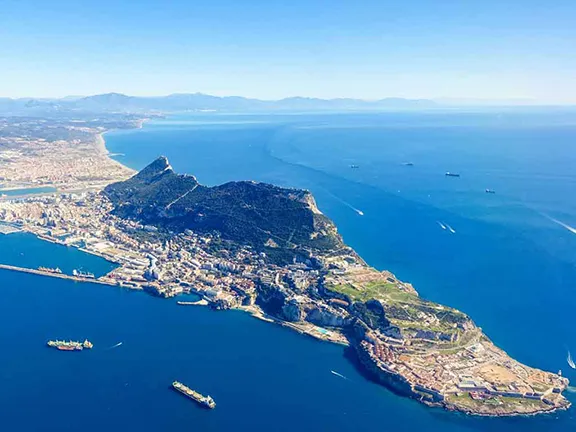 1: Defending Gibraltar in WWII
1: Defending Gibraltar in WWII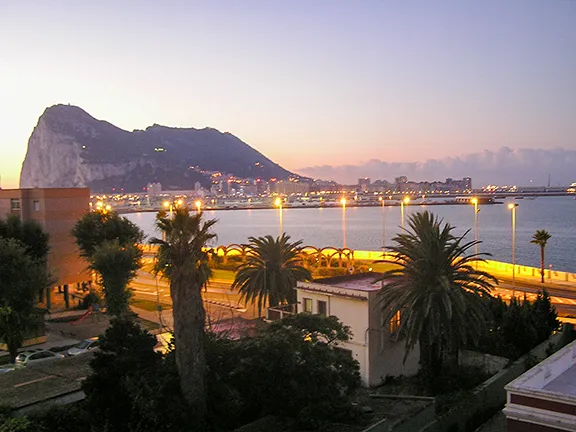 2: Operation Felix - Hitler's Plan to Capture Gibraltar
2: Operation Felix - Hitler's Plan to Capture Gibraltar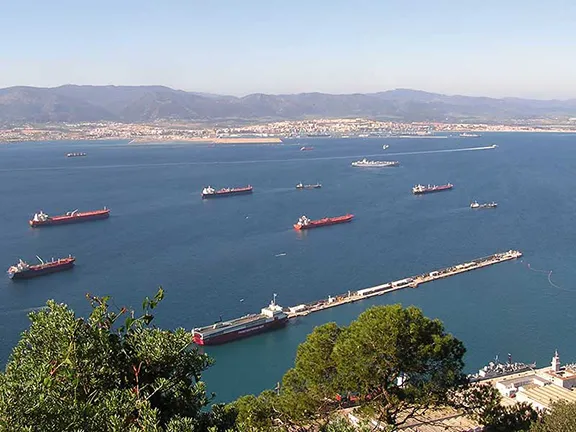 3: Operation Tracer - the Stay Behind Chamber
3: Operation Tracer - the Stay Behind Chamber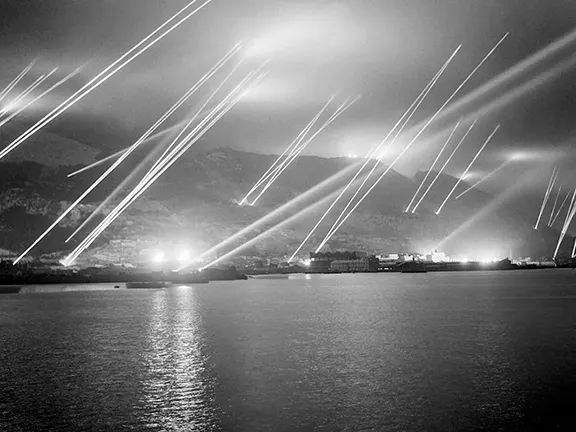 4: The WW II Evacuation of Gibraltar
4: The WW II Evacuation of Gibraltar 5: Gateway to Freedom for Escapers and Evaders
5: Gateway to Freedom for Escapers and Evaders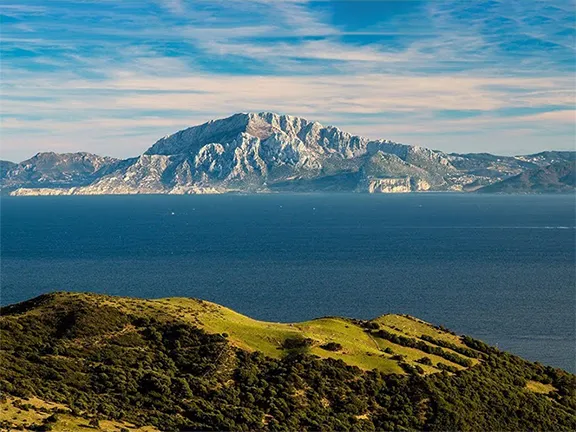 6: Gibraltar's Secret Flotilla during WW II
6: Gibraltar's Secret Flotilla during WW II 7: Covert Missions to France and North Africa
7: Covert Missions to France and North Africa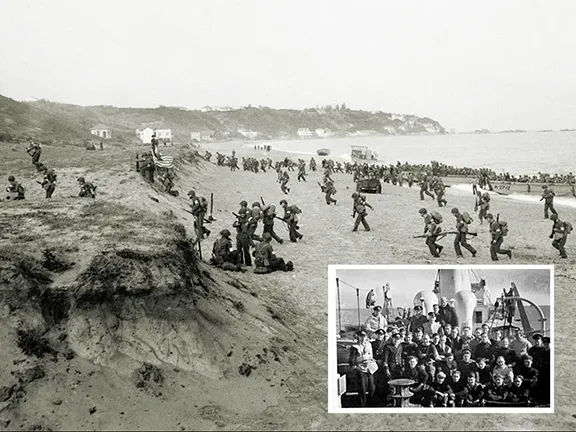 8: Letter from the Front - Personal Recollections
8: Letter from the Front - Personal Recollections 9: Operation Relator - SOE create mayhem in Gib
9: Operation Relator - SOE create mayhem in Gib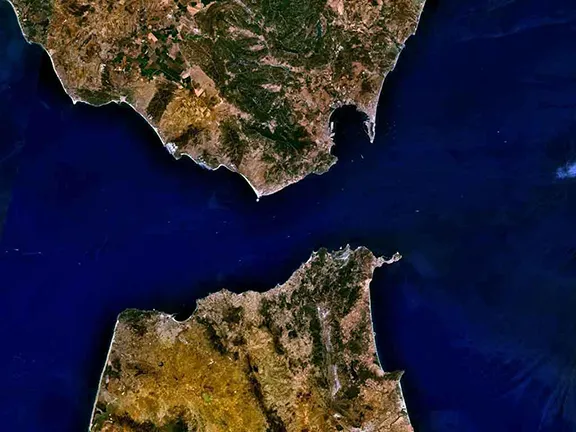 10: Operation Ursa Major - Prelude
10: Operation Ursa Major - Prelude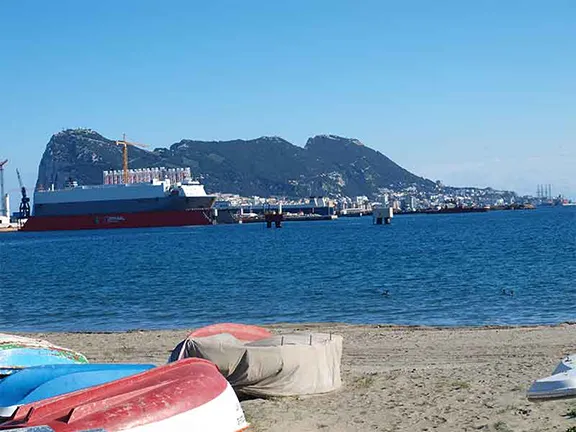 11: Operation Ursa Major - The Olterra
11: Operation Ursa Major - The Olterra 13: Operation Falaise - Zap a Nazi Spy Nest
13: Operation Falaise - Zap a Nazi Spy Nest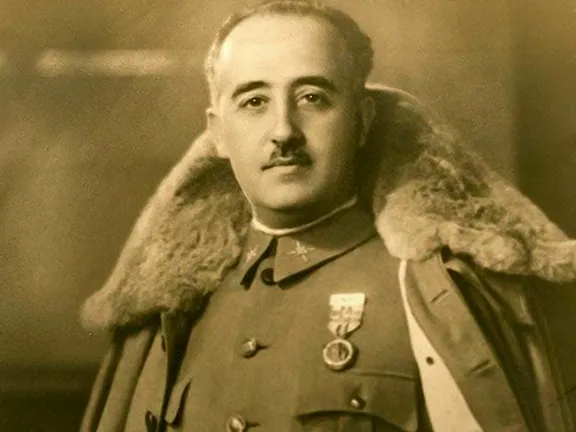 14: UK Policy towards Spain - Spanish Civil War
14: UK Policy towards Spain - Spanish Civil War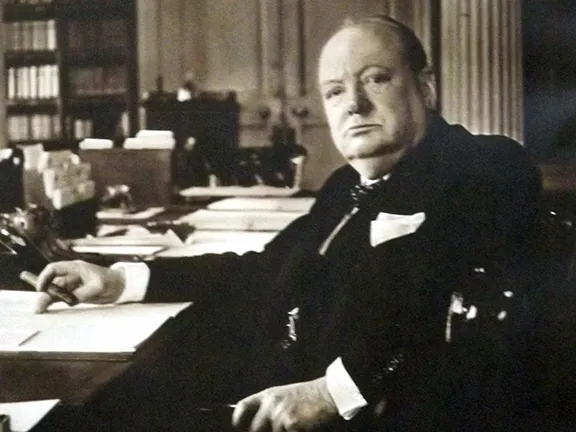 15: UK Policy towards Spain - 1940-1942
15: UK Policy towards Spain - 1940-1942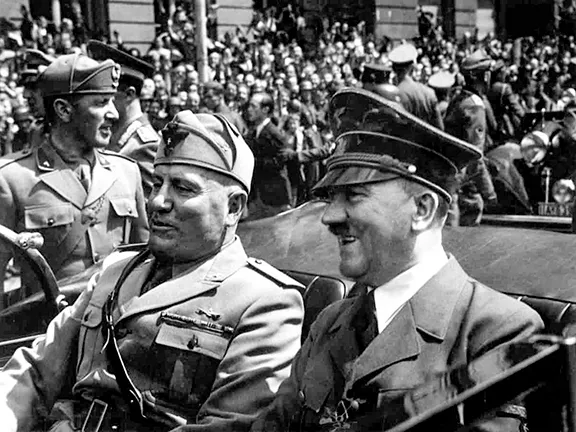 16: UK Policy towards Spain 1942 - 1945
16: UK Policy towards Spain 1942 - 1945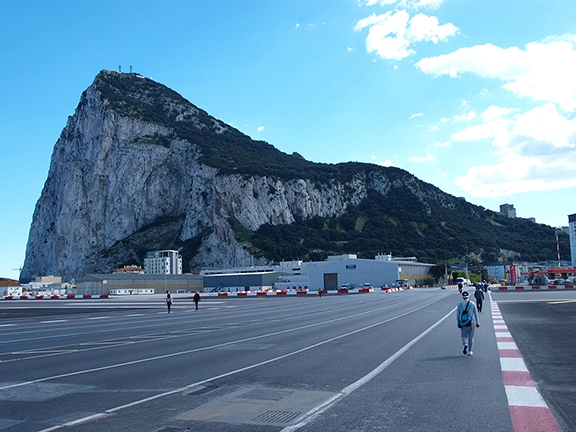 17: Abwehr Operations - Gibraltar WWII
17: Abwehr Operations - Gibraltar WWII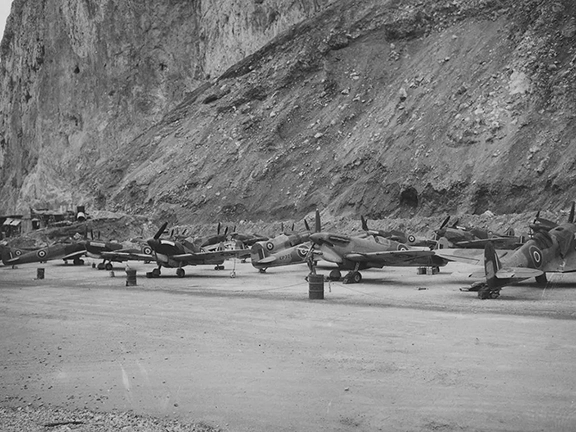 18: Counter Espionage - Gibraltar WWII
18: Counter Espionage - Gibraltar WWII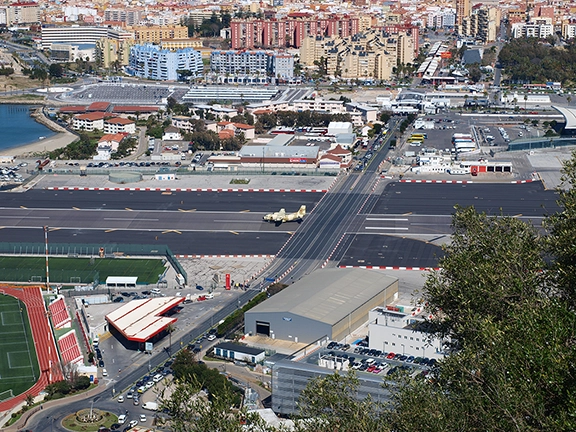 19: Operation Algeciras - 1982
19: Operation Algeciras - 1982